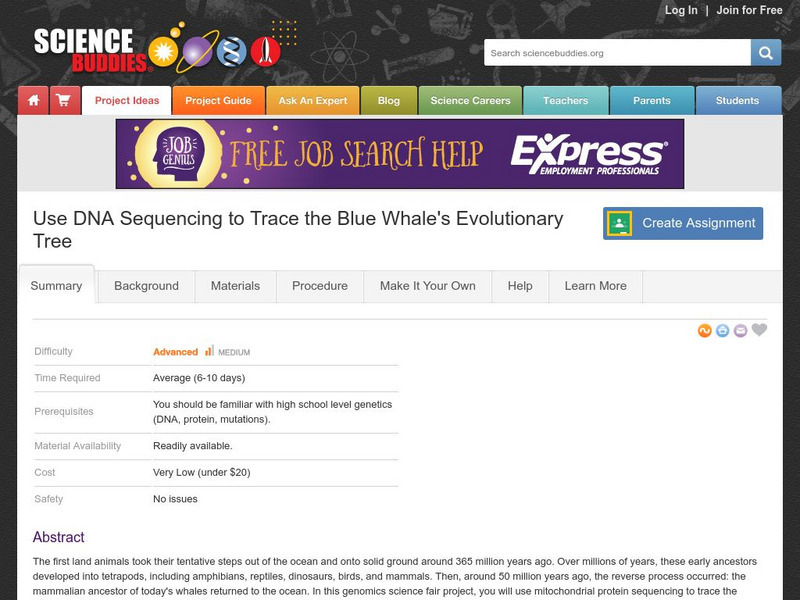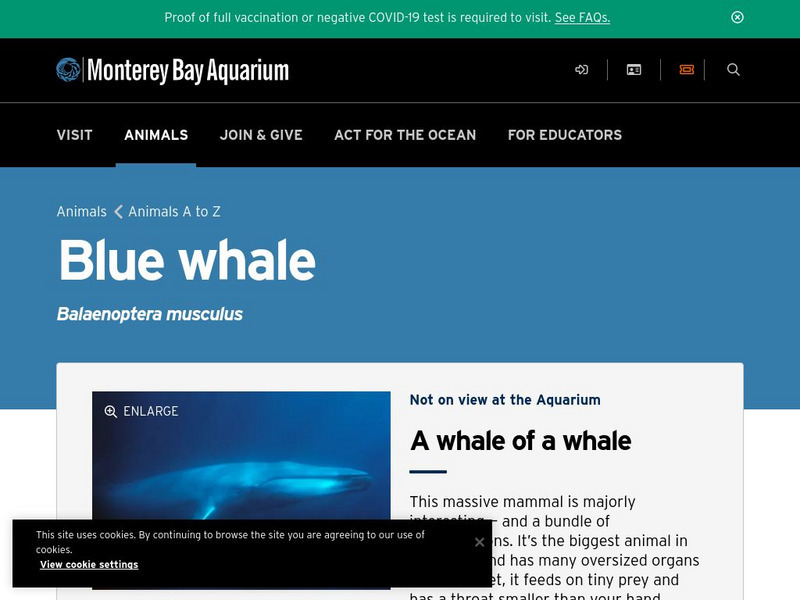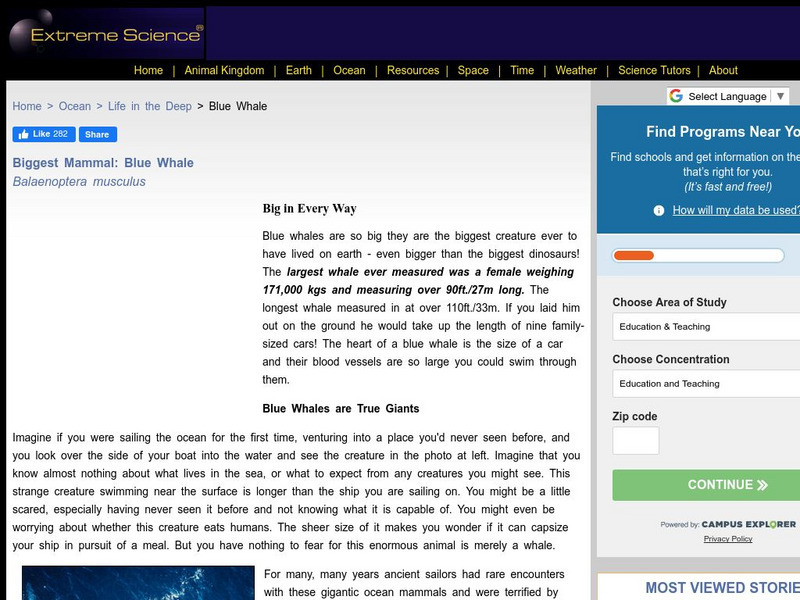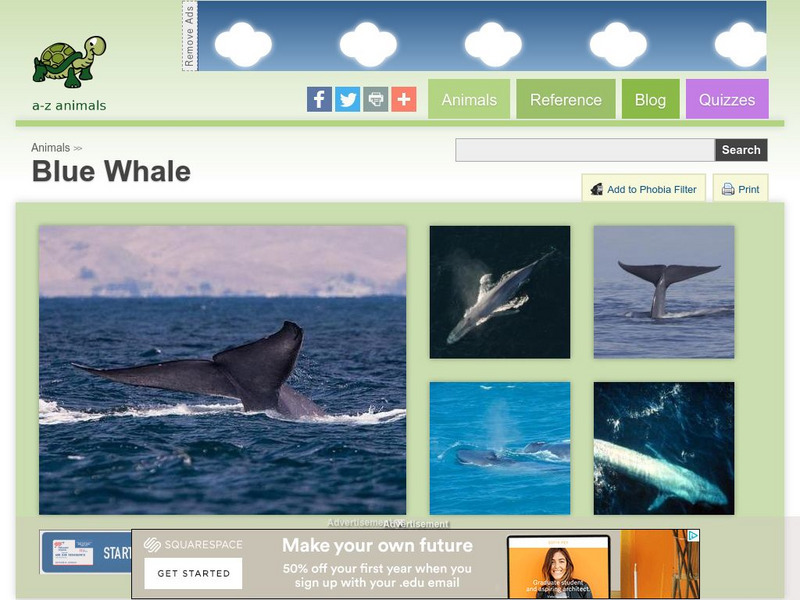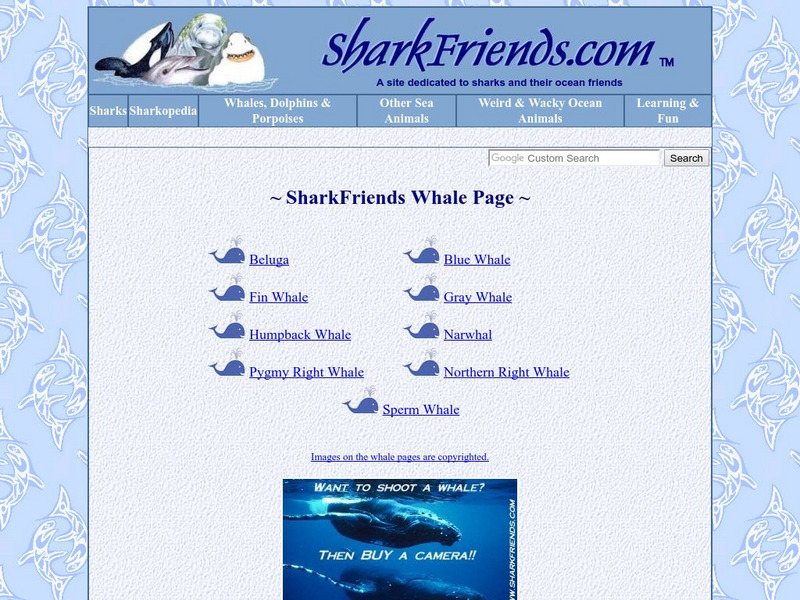Curated OER
Diving Whale Sculpture
Young scholars identify two types of whales: toothed whales and baleen whales, and understand that whales come to the surface for air. Then they recognize that whales are mammals (they nurse their young and are warm-blooded). Students...
Curated OER
How Big is Big?
The blue whale is the focus of this life science activity. Students read an excellent selection on the blue whale, and answer ten comprehension questions. Then, students are divided into two groups. Each group has to estimate how big 85...
Curated OER
Endangered Animal Coloring Page
In this endangered animal worksheet, students color a picture of a blue whale. Students then draw its natural habitat all around it.
NOAA
Noaa: Endangered Species Origami [Pdf]
Discover facts about endangered whales and turtles. Fold paper to make Origami models of these two creatures.
Science Buddies
Science Buddies: Use Dna Sequencing to Trace the Blue Whale's Evolutionary Tree
Around 50 million years ago, the mammalian ancestor of today's whales returned to the ocean. In this genomics science fair project, you will use mitochondrial protein sequencing to trace the evolution of whales and identify their closest...
NOAA
Noaa: Pmel: Acoustic Monitoring, Bioacoustics
Outlines the National Marine Mammal Laboratory's project studying whale acoustics (the sounds whales make). Links to clear acoustics tutorial. Also includes whale biology, with acoustic descriptions and sound clips of their calls. Very...
Monterey Bay Aquarium
Monterey Bay Aquarium: Blue Whale (Balenoptera Musculus)
Resource that gives information on the diet, range, relatives of the blue whale. Conservation notes and cool facts are also included. There are links to similar information on dozens of other types of marine life.
Extreme Science
Extreme Science: Largest Mammal: Blue Whale
Read all about the blue whale, the largest living mammal. A two-minute video is presented, as well as the sound of a blue whale singing.
National Center for Ecological Analysis and Synthesis, University of California Santa Barbara
Kids Do Ecology: Marine Mammals
This resource provides information about marine mammals.
Discovery Education
Discovery Education: Planet Ocean: Blue Whale
This webpage provides a nice description of the Blue Whale along with several photos.
Other
Fishin for Facts Library
A comprehensive site that includes a wealth of information on whales, sharks, penguins and squid.
Smithsonian Institution
Smithsonian Marine Ecosystems Exhibit
Take an online tour of the Smithsonian's "Exploring Marine Ecosystems" exhibit. Learn about coral reefs and look behind the scenes as scientists maintain the model ecosystems.
A-Z Animals
A Z Animals: Animal Facts: Blue Whale (Balsenoptera Musculus)
Provides an overview of the Blue Whale, including their habitat, appearance, behaviour, diet, breeding, and much more. Images of this species and statistics can also be found here.
BBC
Bbc Science & Nature: Blue Whale
Get the facts on the largest animal in the world- past and present. This site provides a detailed fact sheet and photos.
Enchanted Learning
Enchanted Learning: All About Whales
This site provides a great deal of information about whales.
Other
Save the Whales: Blue Whale
The Blue Whales are endangered. Find out why in this highly informative Save the Whales site. Behavioral characteristics, diet, habit, and more are examined in this colorful site.
TED Talks
Ted: Ted Ed: Why Are Blue Whales So Enormous?
Blue whales are the largest animals on the planet, but what helps them grow to the length of a basketball court? Asha de Vos explains why the size of krill make them the ideal food for the blue whale. [5:21]
Other
Shark Friends Whale Page
Dive down deep with these creatures and learn more about them without leaving your computer. Site contains information on different types of whales such as gray, northern right, fin, blue and other species.
Defenders of Wildlife
Defenders of Wildlife: Fact Sheets
Here you can find fact sheets on over 50 species of animals. Find an animal by where it lives in the world, and learn all about it.
MarineBio Conservation Society
Marine Bio: Blue Whales
Discover useful information about blue whales including description, behavior, range, habitat, diet, breeding, and conservation status.
NPR: National Public Radio
Npr: Blue Whale Sighting Thrills Researchers
National Public Radio reports on the blue whale, which has been on the endangered species list for almost 40 years. Find out why a recent siting off the coast of Alaska has given researchers some cause for optimism.
Canadian Museum of Nature
Canadian Museum of Nature: Blue Whale
The blue whale is believed to be the largest animal that has ever existed on Earth, even larger than dinosaurs were. These gentle creatures are at risk and only about 10,000 remain today. Learn some interesting facts about them here.
Canadian Museum of Nature
Canadian Museum of Nature: Grey Whale
The Canadian Museum of Nature provides a concise introduction to the Grey Whale. Learn some basic facts about this large baleen whale. Pictures of the Grey Whale are also provided.
NOAA
Noaa: Endangered Whales
"There are currently seven species of cetaceans in U.S. waters that are protected under the Endangered Species Act." This site provides links to each species as well as provides colorful and engaging pictures.





![Noaa: Endangered Species Origami [Pdf] Activity Noaa: Endangered Species Origami [Pdf] Activity](https://d15y2dacu3jp90.cloudfront.net/images/attachment_defaults/resource/large/FPO-knovation.png)
